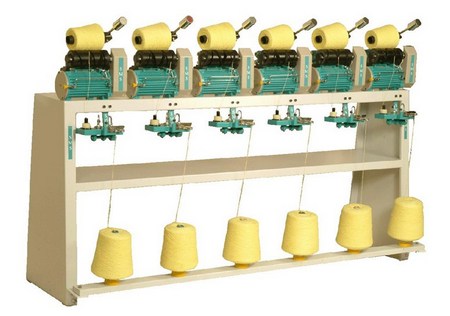What is Winding?
The process of transferring yarns from bobbin, hank, ring etc. into a convenient package is known as winding. It can be mechanical or electrical. Warp yarn is wound on cheese, cone and flanged bobbin packages and weft yarn is wound on cop and pirn packages.
 |
| Fig: Winding of yarn |
Object of Winding:
There are some important purposes of winding process which are presented in the below:
There are some important purposes of winding process which are presented in the below:
- It is used to improve the yarn quality.
- It is used to get right quality of fabric.
- It is used for achieving suitable packages.
- It is used to empty the spinner’s bobbin so that it can be used again.
- It is used to store the long length of yarn.
- It is used to increase the efficiency of yarn for the next processes.
- It is used to clean the yarn.
- It is used to remove different types of yarn faults such as slubs, neps, hairiness and slubs of foreign matters etc.
- It is used to transfer yarn from one package to the other package. It is used for weaving purposes.
- It is used to achieve good warp yarn.
- It is used to increase productivity.
- It is used to reduce end breakage.
Requirements of Winding:
There are different key requirement of winding which are mentioned in the following:
- Yarn to be wound so that it can be unwound easily.
- Package hardness should be perfect.
- Size and shape of winding should be proper.
- Characteristics of the yarn should not be changed.
- The yarn must not be damaged in any way during winding process.
- During winding, always should be observed if yarn fault become less.
- The package size must be controlled the particular economic requirements.
- Should be taken care to avoid excess looseness and tightness.
- The yarn package must be cheap.
